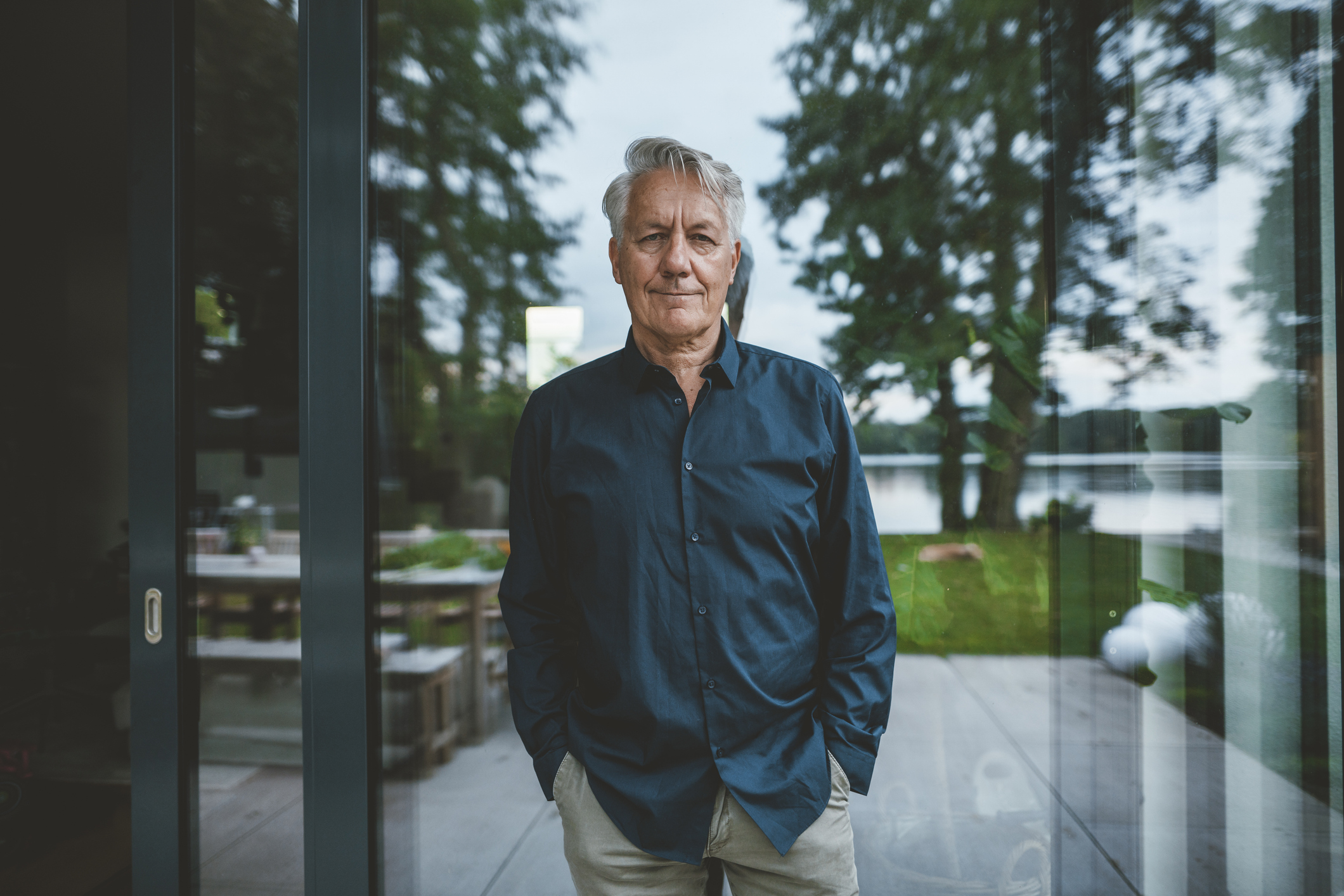I Have to Take a $22,000 RMD by the End of the Year, and I Don't Need the Money. What Should I Do With It?
We ask financial experts for advice.


Question: I have to take a $22,000 RMD by the end of the year, and I don't need the money. What should I do with it?
Answer: The nice thing about saving for retirement in a traditional IRA or 401(k) is getting to enjoy an immediate tax break on your contributions. If you found yourself in a higher tax bracket during your career, a traditional retirement account probably made more sense for you than a Roth.
But what if you're older and are now regretting that decision because you’re on the hook for a $22,000 required minimum distribution (RMD) you don’t need?
From just $107.88 $24.99 for Kiplinger Personal Finance
Become a smarter, better informed investor. Subscribe from just $107.88 $24.99, plus get up to 4 Special Issues

Sign up for Kiplinger’s Free Newsletters
Profit and prosper with the best of expert advice on investing, taxes, retirement, personal finance and more - straight to your e-mail.
Profit and prosper with the best of expert advice - straight to your e-mail.
If you don’t take that distribution by year-end, you could be looking at a 25% penalty for a missed RMD that amounts to $5,500. That’s a lot of money to throw away.
A better idea? Find a good use for that money — even if it requires you to get creative. Here are some options.
Wipe out or reduce your tax liability with charitable contributions
RMDs can sting when you don’t need the money, since you’re increasing your tax burden for what might seem like no good reason. One way to potentially cancel that tax bill is to donate funds directly from your retirement account to charity in the form of a qualified charitable distribution (QCD).
As James Hutchens, national practice lead for Wealth Advisory at Northern Trust, explains, “If you’re 70½ or older, you can make a qualified charitable distribution directly from your IRA — up to $108,000 in 2025 — to a qualified nonprofit. This satisfies your RMD and avoids adding the withdrawal to your taxable income.”
You should also know that from a tax perspective, QCDs can be beneficial because they're not itemized, but simply excluded from your taxable income. This means you can still take the standard deduction, which might be your preferred route if you’re no longer paying off a mortgage and don’t have many deductions to itemize.
To be clear, a QCD must go directly from your IRA to a registered charity, and you can't make a QCD directly from a 401(k). However, you can roll funds from a 401(k) into an IRA, then make your QCD from that account to satisfy your RMD.
Along these lines, Mark Gelbman, financial adviser and owner at Strategic Wealth Solutions, says that if you’re forced to take an RMD and are looking to donate the money, it could pay to think outside the box.
“Look at organizations that you’re passionate about and figure out if you can do some good while also minimizing your tax burden,” he says. “Maybe it’s a high school or college that you attended or a community theater that you’re passionate about. Think about those under-funded institutions that are consistently looking for resources but don’t necessarily have deep-pocketed donors.”
Gelbman also says you can look at setting up a family foundation. This generally won’t allow you to do a QCD. However, as he explains, “That could be a great opportunity to get younger generations into a more charitable mindset so they’re more likely to be charitable in their legacy planning.”
Create a living inheritance
A living inheritance allows you to transfer assets to your loved ones while you’re alive rather than bequeath them upon your death. As Hutchens explains, “Many families earmark RMDs for meaningful experiences, from multigenerational vacations to home upgrades, or use the annual gift tax exclusion to pass wealth directly to their heirs.”
If you don’t need to spend your RMD on yourself, it might bring you great joy to see that your money is being used to better a loved one’s financial situation.
Hutchens also suggests using the money to pay for a loved one's education.
"Some clients use RMDs to contribute to 529 plans for grandchildren, which can grow tax-free when used for education and may provide a state tax deduction."
Earmark the money for special experiences
If you don’t need your RMD, you might be inclined to take it as late in the year as possible. But Robert Jeter, a certified financial planner and founder at Back Bay Financial Planning & Investments, says you might want to adopt a different approach — namely, quarterly withdrawals.
“If done quarterly, it represents a special sort of income that can be spent on a really nice dinner with a spouse or a vacation every three months,” he explains.
Jeter says that while you could take the money out monthly, in that situation, “it just becomes more income to spend or re-allocate elsewhere.”
If you have a spouse or partner, you might want to sit down together once every three months to make a list of fun activities you could do with the money. If you have events or trips to look forward to, you might not resent having to take that money out of your retirement account.
Jeter also suggests talking with retired friends to see what new activities they’ve taken up since they stopped working.
“Neighbors or others in your community or retirement groups are great places to brainstorm these types of ideas or activities,” he says.
Read More
Profit and prosper with the best of Kiplinger's advice on investing, taxes, retirement, personal finance and much more. Delivered daily. Enter your email in the box and click Sign Me Up.

Maurie Backman is a freelance contributor to Kiplinger. She has over a decade of experience writing about financial topics, including retirement, investing, Social Security, and real estate. She has written for USA Today, U.S. News & World Report, and Bankrate. She studied creative writing and finance at Binghamton University and merged the two disciplines to help empower consumers to make smart financial planning decisions.
-
 Holiday Tax Scams: 'Tis the Season to be Wary
Holiday Tax Scams: 'Tis the Season to be WaryTax Scams Navigating tax tricks of the holiday season may be daunting, but don't let that destroy your festive spirit
-
 Metro by T-Mobile Is Giving Away This Samsung Galaxy A16: Which Plans Are Eligible?
Metro by T-Mobile Is Giving Away This Samsung Galaxy A16: Which Plans Are Eligible?Metro by T-Mobile is offering free Samsung Galaxy A16 phones on eligible plans right now. Here’s how the deal works.
-
 I Drive and Collect Classic Cars: Here’s How I Got Started
I Drive and Collect Classic Cars: Here’s How I Got StartedAre classic cars a hobby or an investment strategy — or both? Either way, the vintage car scene is much cooler and more affordable than you think.
-
 I Drive and Collect Classic Cars: Here’s How I Got in the Game Without Spending a Fortune
I Drive and Collect Classic Cars: Here’s How I Got in the Game Without Spending a FortuneAre classic cars a hobby or an investment strategy — or both? Either way, the vintage car scene is much cooler and more affordable than you think.
-
 The $183,000 RMD Shock: Why Roth Conversions in Your 70s Can Be Risky
The $183,000 RMD Shock: Why Roth Conversions in Your 70s Can Be RiskyConverting retirement funds to a Roth is a smart strategy for many, but the older you are, the less time you have to recover the tax bite from the conversion.
-
 A Financial Pro Breaks Retirement Planning Into 5 Manageable Pieces
A Financial Pro Breaks Retirement Planning Into 5 Manageable PiecesThis retirement plan focuses on five key areas — income generation, tax management, asset withdrawals, planning for big expenses and health care, and legacy.
-
 4 Financial To-Dos to Finish 2025 Strong and Start 2026 on Solid Ground
4 Financial To-Dos to Finish 2025 Strong and Start 2026 on Solid GroundDon't overlook these important year-end check-ins. Missed opportunities and avoidable mistakes could end up costing you if you're not paying attention.
-
 Are You Putting Yourself Last? The Cost Could Be Your Retirement Security
Are You Putting Yourself Last? The Cost Could Be Your Retirement SecurityIf you're part of the sandwich generation, it's critical that you don't let the needs of your aging parents come at the expense of your future.
-
 The Retirement Donor's Checklist: Key Deadlines by Gift Type
The Retirement Donor's Checklist: Key Deadlines by Gift TypeRetirees have some charitable contribution options that can help avoid spikes in income from RMDS and capital gains.
-
 I'm 73, Retired, and Dreading Winter, But I Can't Afford to Be a Snowbird. Help!
I'm 73, Retired, and Dreading Winter, But I Can't Afford to Be a Snowbird. Help!How can a snowbird wannabe warm up without the expense? We asked professional wealth planners for advice.
-
 5 Smart Things to Do With Your Year-End Bonus, From a Financial Professional
5 Smart Things to Do With Your Year-End Bonus, From a Financial ProfessionalAfter you indulge your urge to splurge on a treat, consider doing adult things with the extra cash, like paying down debt, but also setting up a "fun fund."